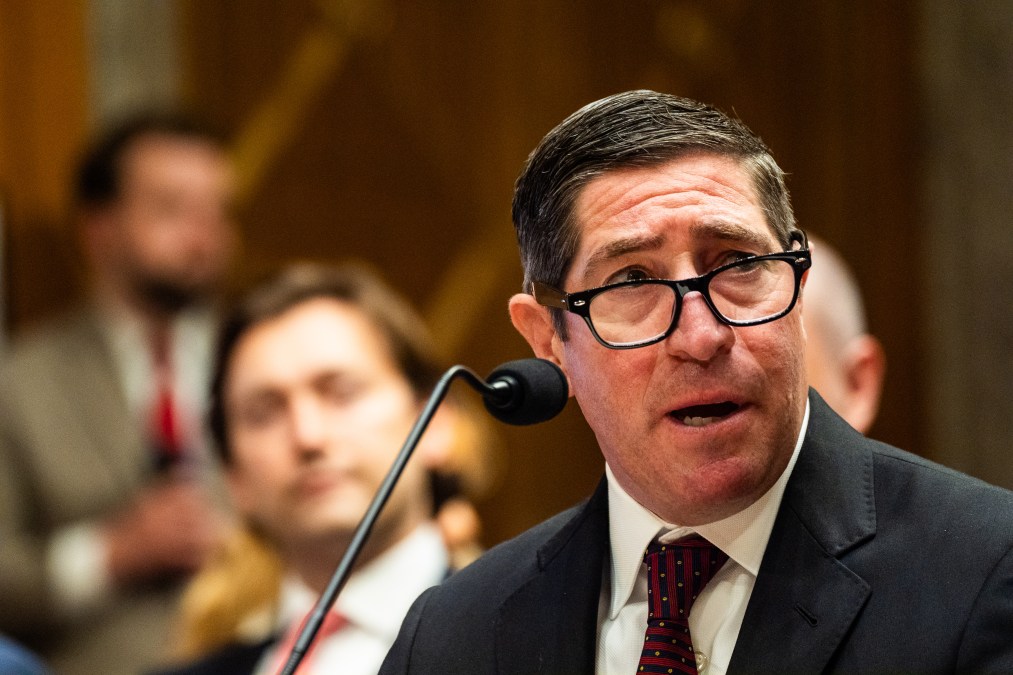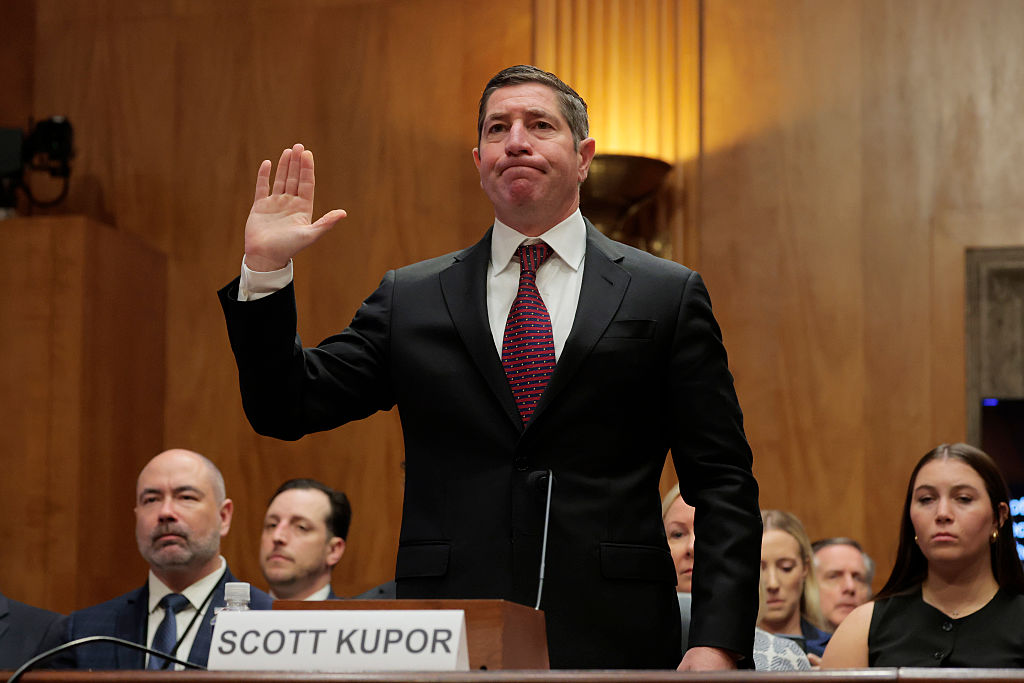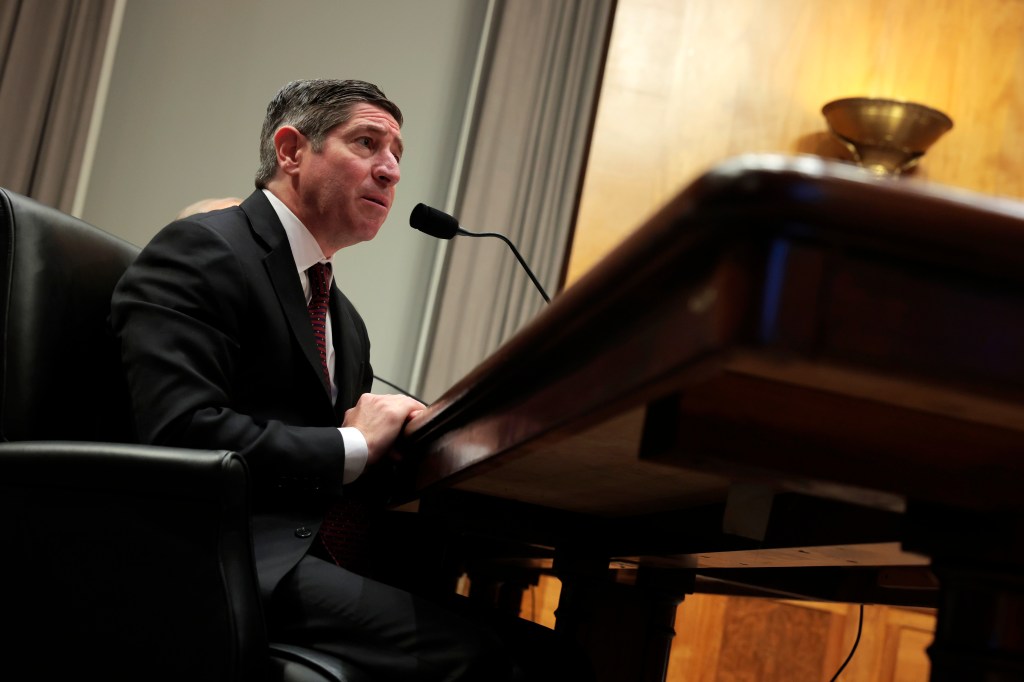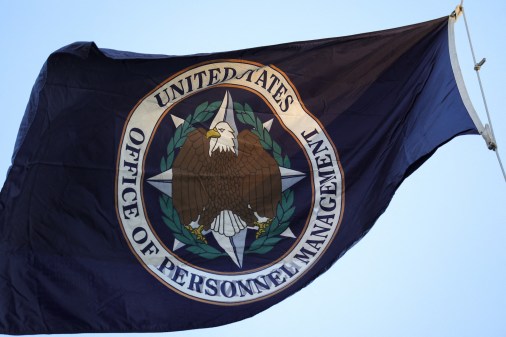OPM’s Scott Kupor: DOGE was a ‘catalyst’ for efficiency. Operationalizing it comes next.

The Office of Personnel Management was something of a ground zero for the activities of the Department of Government Efficiency in the early days of the Trump administration. But just weeks into his tenure, freshly installed OPM Director Scott Kupor is signaling a new chapter for the federal workforce agency.
DOGE was “a catalyst” for making efficiency processes part of everyone’s “vernacular” in the federal government, Kupor told FedScoop in an interview. Now, he said, “we’re in that operational phase, which is, we got to make this stuff actually happen and operational.”
The workforce agency was one of the first in which DOGE agents popped up, gaining access to personnel databases — a move that has since been halted by a district court injunction — and leveraging a new governmentwide email capability to prompt federal workers for five bullet points on what they did the previous week.
OPM has further been instrumental in carrying out DOGE initiatives to reshape the federal workforce, establishing the incentivized separation offers such as the “Fork in the Road,” as well as sending instructions to federal agencies on probationary worker terminations that it later updated amid litigation to note it was not a direction.
However, during a roughly 30-minute interview with FedScoop on Monday, Kupor said that DOGE workers aren’t currently detailed at the agency or accessing its data, and in follow-ups after that conversation, a spokeswoman confirmed the agency hasn’t hired any formers of the efficiency group as full-time employees either.
Kupor also suggested that the “five bullets” should be revisited to see if they’re really providing value. That effort has quieted in recent months, but per the spokeswoman, emails from employees are still coming to OPM’s inboxes.
For the new director, priorities include putting efficiency into practice through activities like modernizing the federal retirement process and AI implementation; restructuring how the government evaluates performance; and developing a federal workforce that can address current needs through recruitment, retraining, and perhaps even public-private partnerships.
Broadly, Kupor sees the agency as one that can be helpful to other federal partners, providing guidance on administration priorities such as the federal reductions-in-force and restructurings President Donald Trump requested in his directive establishing DOGE marching orders, rather than instructing others what to do.
Kupor, the former managing partner from venture capital firm Andreessen Horowitz, was confirmed by the Senate 49-46 earlier this month — a near party-line vote. During his confirmation hearing, he indicated that reviewing data security and privacy were top-of-mind, given the agency’s history with a 2015 breach that compromised the personal information of roughly 22 million people. He also underscored the importance of communicating with employees during times of change, saying OPM should be a leader in being transparent about its decisions.
In his first weeks on the job, Kupor has been keeping in line with that aspiration, talking to reporters about the agency’s own personnel actions and goals.
He estimated OPM would be down roughly 1,000 positions by year’s end through voluntary separations or staffing reductions, and expressed interest in a more modernized OPM. As Kupor takes over, two such projects are already underway at the agency: A refresh of its public-facing federal human capital data portal, known as FedScope, and an effort to fully digitize the antiquated federal retirement system.
The following excerpts from FedScoop’s interview with Kupor have been edited for length and clarity.
FedScoop: With the elimination of OPM’s Human Capital Data Management and Modernization office and some separations within Retirement Services, how are you approaching the FedScope and digital retirement projects? With potentially reduced staff in those areas, what does that look like for OPM?
Scott Kupor: Digital retirement, actually, we’re making tremendous progress on, and we’ll have some announcements here fairly shortly on that. But we’re making a lot of progress there. We’ve actually brought in some people to the organization who are technical folks who are helping us kind of drive that project. So I think that one is actually in really good shape.
More broadly, I think of it more as a reorganization in terms of the elimination of that department [the Human Capital Data Management and Modernization office]. Every group needs to think about digital modernization as part of their deliverables of what they’re doing. So when we talk to retirement services, they have a big call center aspect. They’ve got to think about, ‘OK, what role does technology play in improving operational efficiency in the call center?’ We’ve got a whole group, we call it WPI [Workforce Policy Innovation], which basically writes rules and regulations that stem from executive memos. In an AI-first world, the types of work they do should be massively impacted in a positive way by being able to utilize AI for summarization or for research-related activity. We have a very big CIO office who’s got, obviously, all the technical resources, but I really want to drive technology adoption and modernization into the relevant business units. That’s really how I think about that organizational change, is to make sure that it just should be a first-class citizen in every organization’s activity, and not have some centralized group that’s doing strategic planning and things of that sort that are removed from the day-to-day of the actual operations of the business.
FS: You mentioned in your confirmation hearing you wanted to immediately do a full business review of the data privacy aspects of OPM just given its history in that area. Has that review begun?
SK: It’s not started yet, but we are planning for it.
FS: What does the scope look like? What are you planning there?
SK: The scope is just like you would do any kind of enterprise risk management thing, which is: What exists today? What vulnerabilities, if any, do we think we have? What remediations exist or are we lacking on? And then if we’ve got remediations that we think are critically important, what’s the timeline by which we can deploy them? So that’s basically how we’re going to approach it. But no, it hasn’t kicked off yet. I’m still, as I mentioned, I’m just two weeks in, but it’s definitely an important project, and we’ll get it done.

FS: DOGE’s access to data at OPM has obviously been a big topic before you were confirmed. What does DOGE’s access to data at OPM look like currently?
SK: To my knowledge, DOGE has no access to information. The only people who have access to information here are people who are OPM employees who are fully detailed into OPM. And I don’t even think we have anybody today who’s detailed over from another agency. So the people here are either full-time OPM employees or they are OPM political appointees, and those are the only people who have access to systems.
FS: One of the legal filings showed that there were additional interim protocols established for access to certain data with personally identifiable information (PII) related to the DOGE work. Were those ever used, or do those people no longer have that access?
SK: To be totally transparent, I don’t know if they were used. What I can tell you now is there’s nobody who has access to information who’s not actually an OPM [employee] — like in this building with the appropriate credentials to have access to data. And as I said, I don’t believe — I could be wrong — but I don’t believe we have anybody detailed over from USDS [U.S. DOGE Service] or any other agency.
[When asked if this was true following the interview, a spokeswoman confirmed it was.]
FS: What do you expect the relationship to be between OPM and the DOGE going forward, as far as getting to some of these goals that the administration has set forth in that area?
SK: At a high level, as I mentioned the other day, I think of what DOGE did as — they were a catalyst to start a process of operational efficiency becoming part and parcel of everybody’s vernacular in the government. And now, we’re in that operational phase, which is, we got to make this stuff actually happen and operational. So what you’re going to see from us, which is consistent with executive orders, is giving guidance around things like that are in our bailiwick. So performance management standards, how to think about merit hiring, and stuff like that. Then, we at OPM, obviously, are going to continue to look for ways to generate operational efficiency inside the organization.
With respect to other agencies, we will be a partner to them. We have resources inside of a group that we call HRS here [Human Resources Solutions] that can basically be effectively contracted for by other agencies who can go in, and they’re experts on organizational restructuring or objective-setting, or RIFs or stuff like that. So to the extent that other agencies want our help on those things, you can think of us as, effectively, an internal consulting arm to them. What we’re not going to do, though, is — we recognize OPM does not have authority to reach into an organization and say you must cut by this level, and if you don’t do it, we’re going to do it. That’s just not in our purview. I think the way this will work is if OMB has targets that they want people to look for, for savings, OMB will be the one who sets those targets, and then to the extent that there is help that we can offer in terms of executing on that, then we’re available to do so.
FS: Early on there was an effort to collect information from folks in government through the “five bullets” emails. Those emails were sent to OPM email addresses. Given your interest in data security and data privacy at the agency, what efforts are being taken to make sure that information is protected and secured?
SK: I don’t know exactly the protocols for how we’re doing it, but we’re protecting it in the same way that we protect any other data here inside of OPM. So we have a whole team within the OCIO group who’s responsible for setting those standards and for monitoring it. We haven’t had any issues with respect to that. Obviously, we’re always on alert to make sure that we’ve got things that are critical. We have people’s retirement records and stuff like that, so we are very keen to the fact that we’ve got to maintain security here. There’s nothing different, I would say, that we’re doing with respect to the five things email, but it’s part of the broader security parameters that we have within OPM.

FS: And is OPM involved in the efforts to analyze those emails at all? If so, what do those efforts look like?
SK: Basically, what OPM was doing was sending out the email, and then, as you mentioned, the data was coming back, and then if agencies wanted the data, we were forwarding it to the agencies for them to do whatever it is that they ultimately decided to do. I don’t think it’s been a very active effort, to be completely honest, in the last like month or two. As with all things, I think we should take a look at that and see is it accomplishing, quite frankly, what it was intended to accomplish? And if so, we should keep doing it. But I don’t want to keep doing things just for the sake of the fact that they existed at one point in time. So it’s something that we’re looking at to see: Does it actually add any value and do agencies want to keep doing it? If not, then my goal would be to figure out how do we sunset things that may not have lasting value?
FS: Was AI being used to analyze those emails? There were some reports about that.
SK: I would say very light. I would say there was probably some summarization activity or something. I’m not sure that there was any deep analysis of trying to parse it basically, but I think it was mostly for summarization purposes.
FS: We hear a lot of talk in the federal government space about the fact that the federal workforce is aging. There’s been efforts over the years to get young people into government. Particularly, some of those efforts have been in those spaces where new talent would be of benefit — so tech, cyber, AI. That probationary termination has targeted many new hires, so potentially younger folks, and technical talent has not been spared from some of the RIFs. How does OPM plan to address technical gaps in government given that landscape and potentially some reduced capacity here?
SK: This is a huge issue, and you’re absolutely right. We have to solve this. In my mind, we have to tell the story of what’s compelling about being in federal service, right? As we know, we’re never going to solve massive pay gaps between the federal and private sector. There are some tools, though, that we have that I think we need to explore, quite frankly, more systematically, which is ways to try to bridge some of those gaps for critical skills. There are some programs that I understand — like DOD has some and I think there are a few others across the government, they’re very limited — where there are places in which you could potentially go off the traditional GS pay scale, if you can demonstrate this is a critical area. I haven’t studied it yet enough to know what legal authority we have there, but I do think it’s worth us looking at.
But I think more fundamentally, we have to tell the story. The story of the federal government is — what I want it to be is — if you come here as a young person, you’re going to be exposed to really hard and really interesting problems at a scale that you can’t ever get in the private sector. You’re not going to be bogged down by 8,000 layers of bureaucracy, and we are going to allow you to innovate and to take measured risk in terms of how you do things. You can be recognized and promoted, even if you’re young, if it turns out you’re doing a great job — as opposed to a tenure-based tracking system. We have to address those shortcomings in the system, and we have to go tell that story.
This is another area where I think some element of public-private partnership makes sense. I’ll just make this up — I would love to be able to go to a big tech company and say: When you guys are doing college recruiting, the federal government should be a partner with you guys on that, and let’s find people. Maybe there’s some on-ramp where you guys hire folks, and in their first year or two, they get seconded to the federal government, and we’re getting the benefit of their skill sets. Then they have this great off-ramp where after two years, they come back, they come to your company and they get tenure credit and all the other stuff for the time period they’ve done. And it’s additive to you because they’ve been exposed to really big and really interesting problems they couldn’t otherwise get.

FS: At your confirmation hearing, you also mentioned the importance of communicating with workers during times of change. Some sources told FedScoop that during the recent State Department RIF they were surprised by how things went down. So what are your recommendations for agencies moving forward in terms of how they should be communicating with workers during these restructurings and reductions-in-force?
SK: This is where, again, I mentioned we’ve got this team within HRS. This is where I would like, if people want our help, I’d like to be able to proactively help them on this stuff. If I had my way, I would say at the beginning of the process: We are looking at a potential restructuring. We don’t know exactly what that entails, but here’s the process. Over this period of time, we’re going to be doing business reviews with people and just at least let people know that there is a process out there. Now, for some people they’re like, ‘we don’t want to do that because it unnerves people.’ I just think you’re kidding yourself if you think people don’t know that these things are happening in some office. It’s better to tell people what’s happening. And you can’t promise them things you can’t promise them.
I’ll just give you an example. I told our team when I was here on my first day, ‘I know we’ve been through a lot of restructuring. Right now, I don’t have a plan that says — from the roughly 1,000 people that we talked about — I don’t have any plan which says we need to get down to a lower number.’ Now, what I did say to them is, ‘I can’t promise you that, that may not change.’ Maybe the White House will give us directives on something, or maybe we will do a business review and find that we’re doing something that just isn’t worth doing, and so we’ll have to look at it.
Then I think you have to help people understand, when you’re ready to deliver the news, what is the process by which you did this. Was this a performance review? Was it, ‘hey, we looked at a function and decided it’s not important?’ Was it ‘we just decided we are doing 50 things, and we can only afford to do 48 of them, so we have to do it?’ It’s just about telling people what’s happening, and then hopefully recognizing the humanity of the fact that these are people’s jobs. And so as much as you can figure out ways to — like we did with the [deferred resignation program] — find ways to give them an off-ramp that also gives them some financial security, at least, for a longer period of time they would otherwise get. Make those things available to them.
Every agency is going to do what they’re going to do, but at least my hope would be we have really good people on our team who actually could help them with that, so to the extent they want that help, we would be very excited to do that.






